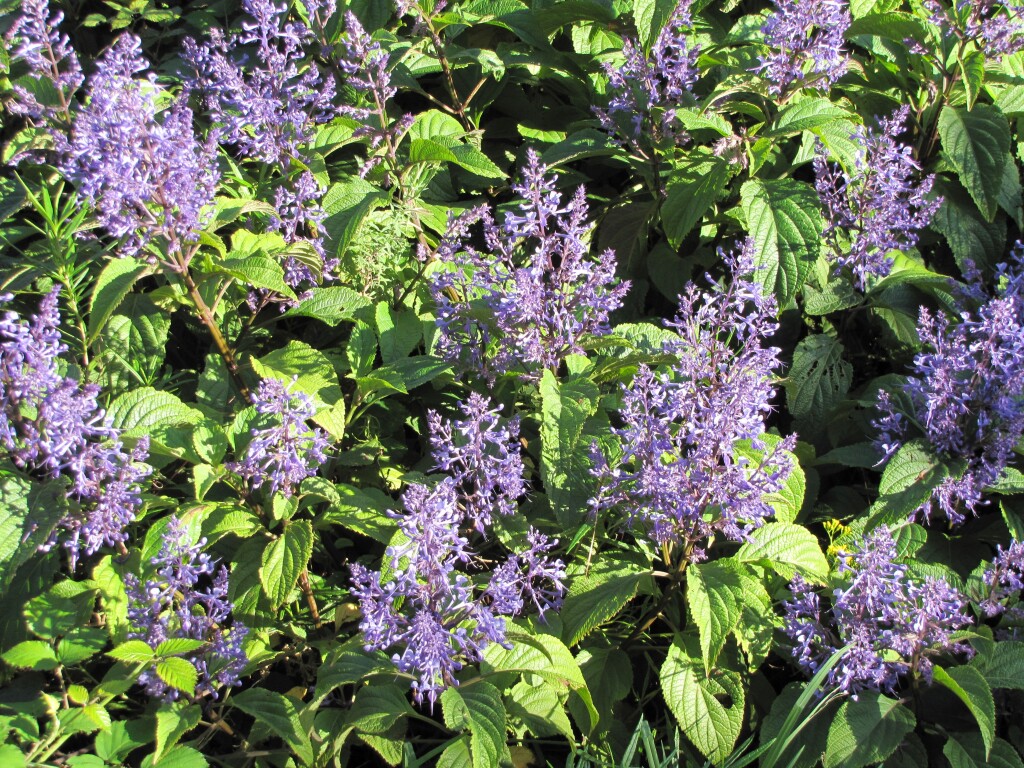Plectranthus
Perennial, rarely annual herbs or soft-wooded shrubs, sometimes succulent; sometimes with a tuberous base. Leaves opposite. Inflorescence raceme-like, with 1–3-flowered, sessile cymes at nodes; bracts subtending cymes persistent. Flowers pedicelate; calyx funnel-shaped, with pedicel attaching centrally at calyx base, 2-lipped; posterior (dorsal) lip 1-lobed, broader than lobes of anterior lipt; anterior (ventral) lip 4-lobed; corolla 2-lipped with lips equal in length, tube straight or gently curved downwards, often gibbous, saccate or almost spurred a base, more rarely dilating gradually towards throat; posterior lip 4-lobed erect, often becoming reflexed; anterior lip cupped or merely concave, straight or becoming reflexed; stamens 4, rarely only 2 fertile; filaments not fused together, held within the anterior lip or becoming free from it and sometimes coiling downwards away from style after anthesis; style bifid. Nutlets ovoid.
72 species from southern and tropical Africa, Madagascar and Sri Lanka.
Genus description recircumscribed following transfer of many species to Coleus (Paton et al. 2019).
Conn, B.J. (1999). Lamiaceae. In: Walsh, N.G.; Entwisle, T.J., Flora of Victoria Vol. 4, Cornaceae to Asteraceae, pp. 418–459. Inkata Press, Melbourne.
 Spinning
SpinningPaton, A.J.; Mwanyambo, M.; Govaerts, R.H.A.; Smitha, K.; Suddee, S.; Phillipson, P.; Wilson, T.C.; Forster, P.I.; Culham, A. (2019). Nomenclatural changes in Coleus and Plectranthus (Lamiaceae): a tale of more than two genera. Phytokeys 129: 1–158.



